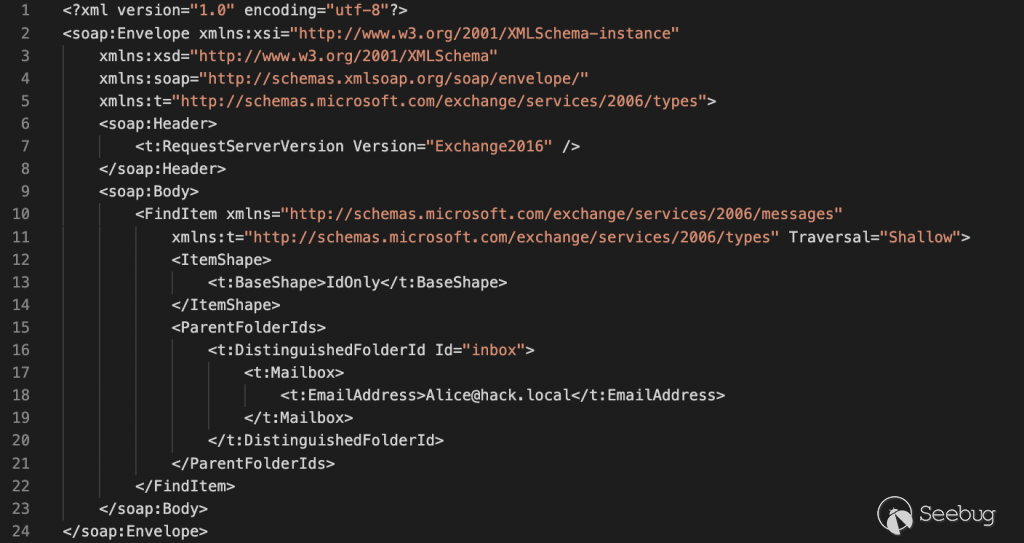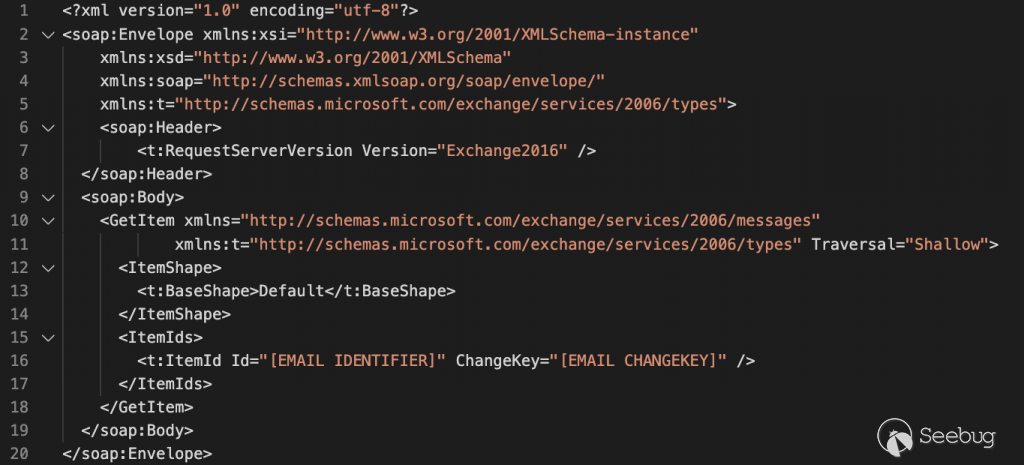## Operation Exchange Marauder: Active Exploitation of Multiple Zero-Day
Microsoft Exchange Vulnerabilities
March 2, 2021
by Josh Grunzweig, Matthew Meltzer, Sean Koessel, Steven Adair, Thomas
Lancaster
__Facebook __Twitter __Email

_**Volexity is seeing active in-the-wild exploitation of multiple Microsoft
Exchange vulnerabilities used to steal e-mail and compromise networks. These
attacks appear to have started as early as January 6, 2021.**_ _
_
In January 2021, through its Network Security Monitoring service, Volexity
detected anomalous activity from two of its customers' Microsoft Exchange
servers. Volexity identified a large amount of data being sent to IP addresses
it believed were not tied to legitimate users. A closer inspection of the IIS
logs from the Exchange servers revealed rather alarming results. The logs
showed inbound POST requests to valid files associated with images,
JavaScript, cascading style sheets, and fonts used by Outlook Web Access
(OWA). It was initially suspected the servers might be backdoored and that
webshells were being executed through a malicious HTTP module or ISAPI filter.
As a result, Volexity started its incident response efforts and acquired
system memory (RAM) and other disk artifacts to initiate a forensics
investigation. This investigation revealed that the servers were not
backdoored and uncovered a zero-day exploit being used in the wild.
Through its analysis of system memory, Volexity determined the attacker was
exploiting a zero-day server-side request forgery (SSRF) vulnerability in
Microsoft Exchange ([CVE-2021-26855](https://cve.mitre.org/cgi-
bin/cvename.cgi?name=CVE-2021-26855)). The attacker was using the
vulnerability to steal the full contents of several user mailboxes. This
vulnerability is remotely exploitable and does not require authentication of
any kind, nor does it require any special knowledge or access to a target
environment. The attacker only needs to know the server running Exchange and
the account from which they want to extract e-mail.
Additionally, Volexity is providing alternative mitigations that may be used
by defenders to assist in securing their Microsoft Exchange instances. This
vulnerability has been confirmed to exist within the latest version of
Exchange 2016 on a fully patched Windows Server 2016 server. Volexity also
confirmed the vulnerability exists in Exchange 2019 but has not tested against
a fully patched version, although it believes they are vulnerable. It should
also be noted that is vulnerability does not appear to impact Office 365.
Following the discovery of CVE-2021-26855, Volexity continued to monitor the
threat actor and work with additional impacted organizations. During the
course of multiple incident response efforts, Volexity identified that the
attacker had managed to chain the SSRF vulnerability with another that allows
**remote code execution** (RCE) on the targeted Exchange servers. In all cases
of RCE, Volexity has observed the attacker writing webshells (ASPX files) to
disk and conducting further operations to dump credentials, add user accounts,
steal copies of the Active Directory database (NTDS.DIT), and move laterally
to other systems and environments.
A patch addressing both of these vulnerabilities is expected imminently.
## Authentication Bypass Vulnerability
While Volexity cannot currently provide full technical details of the exploit
and will not be sharing proof-of-concept exploit code, it is still possible to
provide useful details surrounding the vulnerability's exploitation and
possible mitigations. Volexity observed the attacker focused on getting a list
of e-mails from a targeted mailbox and downloading them. Based on these
observations, it was possible for Volexity to further improve and automate
attacks in a lab environment.
There are two methods to download e-mail with this vulnerability, depending on
the way that Microsoft Exchange has been configured. In corporate environments
it is common that multiple Exchange servers will be set up. This is often done
for load balancing, availability, and resource splitting purposes. While it is
less common, it is also possible to run all Exchange functionality on a single
server.
In the case where a single server is being used to provide the Exchange
service, Volexity believes the attacker must know the targeted user's domain
security identifier (SID) in order to access their mailbox. This is a static
value and is not considered something secret. However, it is not something
that is trivially obtained by someone without access to systems within a
specific organization.
In a multiple server configuration, where the servers are configured in a
Database Availability Group (DAG), Volexity has proven an attacker does not
need to acquire a user's domain SID to access their mailbox. The only
information required is the e-mail address of the user they wish to target.
In order to exploit this vulnerability, the attacker must also identify the
fully qualified domain name (FQDN) of the internal Exchange server(s). Using a
series of requests, Volexity determined that this information could be
extracted by an attacker with only initial knowledge of the external IP
address or domain name of a publicly accessible Exchange server. After this
information is obtained, the attacker can generate and send a specially
crafted HTTP POST request to the Exchange server with an XML SOAP payload to
the Exchange Web Services (EWS) API endpoint. This SOAP request, using
specially crafted cookies, bypasses authentication and ultimately executes the
underlying request specified in the XML, allowing an attacker to perform any
operation on the users' mailbox.
Volexity has observed this attack conducted via OWA. The exploit involved
specially crafted POST requests being sent to a valid static resources that
does not require authentication. Specifically, Volexity has observed POST
requests targeting files found on the following web directory:
/owa/auth/Current/themes/resources/
This folder contains image, font, and cascading style sheet files. Using any
of these files for the POST request appears to allow the exploit to proceed.
If a file such as /owa/auth/logon.aspx or simply a folder such as /owa/auth/
were to be used, the exploit will not work.
## Authentication Bypass Exploit Demonstration
The video below demonstrates the vulnerability being exploited in a lab
environment:
_Figure 1. Video demonstrating the authentication bypass vulnerability at work
in a lab environment._
In the video demonstration, the following SOAP XML payload is used to retrieve
the identifiers of each email in Alice's inbox:

_Figure 2. XML payload used to pull email identifiers from Alice 's inbox
without authentication._
Then, the following payload is used to pull down each individual email:

_Figure 3. Payload used to retrieve individual emails without authentication._
## Remote Code Execution Vulnerability
As mentioned in the introduction to this post, a remote code execution (RCE)
exploit was also observed in use against multiple organizations. This RCE
appears to reside within the use of the [Set-
OabVirtualDirectory](https://docs.microsoft.com/en-
us/powershell/module/exchange/set-oabvirtualdirectory?view=exchange-ps)
ExchangePowerShell cmdlet. Evidence of this activity can be seen in Exchange's
ECP Server logs. A snippet with the exploit removed is shown below.
> ;'S:CMD=Set-OabVirtualDirectory.ExternalUrl="<removed>"
IIS logs for the server would show an entry similar to what is shown below;
however, this URL path may be used for items not associated with this exploit
or activity.
> /ecp/DDI/DDIService.svc/SetObject
In this case, this simple backdoor, which Volexity has named SIMPLESEESHARP,
was then used to drop a larger webshell, named SPORTSBALL, on affected
systems. Further, Volexity has observed numerous other webshells in use, such
as China Chopper variants and ASPXSPY.
## POST Exploitation Activity
While the attackers appear to have initially flown largely under the radar by
simply stealing e-mails, they recently pivoted to launching exploits to gain a
foothold. From Volexity's perspective, this exploitation appears to involve
multiple operators using a wide variety of tools and methods for dumping
credentials, moving laterally, and further backdooring systems. Below is a
summary of the different methods and tools Volexity has observed thus far:
| Method/Tool | Purpose |
| ----------------------------------------------------------- | ------------------------------------------------------------ |
| rundll32 C:\windows\system32\comsvcs.dll MiniDump lsass.dmp | Dump process memory of lsass.exe to obtain credentials |
| PsExec | Windows Sysinternals tool used to execute commands on remote systems |
| ProcDump | Windows Sysinternals tool to dump process memory |
| WinRar Command Line Utility | Used archive data exfiltration |
| Webshells (ASPX and PHP) | Used to allow command execution or network proxying via external websites |
| Domain Account User Addition | Leveraged by attackers to add their own user account and grant it privileges to provide access in the future |
## Indicators of Compromise
### Authentication Bypass Indicators
In Volexity's observations of authentication bypass attacks being performed in
the wild, files such as the following were the targets of HTTP POST requests:
> /owa/auth/Current/themes/resources/logon.css
> /owa/auth/Current/themes/resources/owafont_ja.css
> /owa/auth/Current/themes/resources/lgnbotl.gif
> /owa/auth/Current/themes/resources/owafont_ko.css
> /owa/auth/Current/themes/resources/SegoeUI-SemiBold.eot
> /owa/auth/Current/themes/resources/SegoeUI-SemiLight.ttf
> /owa/auth/Current/themes/resources/lgnbotl.gif
### Remote Code Execution Indicators
To identify possible historical activity related to the remote code execution
exploit, organizations can search their ECP Server logs for the following
string (or similar).
>S:CMD=Set-OabVirtualDirectory.ExternalUrl='
ECP Server logs are typically located at <exchange install
path>\Logging\ECP\Server\
### Webshell Indicators
Further, Volexity has observed indicators that are consistent with web server
breaches that can be used to look on disk and in web logs for access to or the
presence of ASPX files at the following paths:
> \inetpub\wwwroot\aspnet_client\ (any .aspx file under this folder or sub
> folders)
>
> \<exchange install path>\FrontEnd\HttpProxy\ecp\auth\ (any file besides
> TimeoutLogoff.aspx)
> \<exchange install path>\FrontEnd\HttpProxy\owa\auth\ (any file or modified
> file that is not part of a standard install)
> \<exchange install path>\FrontEnd\HttpProxy\owa\auth\Current\<any aspx file
> in this folder or subfolders>
> \<exchange install path>\FrontEnd\HttpProxy\owa\auth\<folder with version
> number>\<any aspx file in this folder or subfolders>
It should be noted that Volexity has observed the attacker adding webshell
code to otherwise legitimate ASPX files in an attempt to blend in and hide
from defenders.
### Web Log User-Agents
There are also a handful of User-Agent that may be useful for responders to
look for when examining their web logs. These are not necessarily indicative
of compromise, but should be used to determine if further investigation.
Volexity observed the following non-standard User-Agents associated with POST
requests to the files found under folders within /owa/auth/Current.
> DuckDuckBot/1.0;+(+http://duckduckgo.com/duckduckbot.html)
> facebookexternalhit/1.1+(+http://www.facebook.com/externalhit_uatext.php)
>
> Mozilla/5.0+(compatible;+Baiduspider/2.0;++http://www.baidu.com/search/spider.html)
> Mozilla/5.0+(compatible;+Bingbot/2.0;++http://www.bing.com/bingbot.htm)
> Mozilla/5.0+(compatible;+Googlebot/2.1;++http://www.google.com/bot.html
>
> Mozilla/5.0+(compatible;+Konqueror/3.5;+Linux)+KHTML/3.5.5+(like+Gecko)+(Exabot-
> Thumbnails)
>
> Mozilla/5.0+(compatible;+Yahoo!+Slurp;+http://help.yahoo.com/help/us/ysearch/slurp)
> Mozilla/5.0+(compatible;+YandexBot/3.0;++http://yandex.com/bots)
>
> Mozilla/5.0+(X11;+Linux+x86_64)+AppleWebKit/537.36+(KHTML,+like+Gecko)+Chrome/51.0.2704.103+Safari/537.36
Volexity observed the following User-Agents in conjunction with exploitation
to /ecp/ URLs.
> ExchangeServicesClient/0.0.0.0
> python-requests/2.19.1
> python-requests/2.25.1
Further other notable User-Agent entries tied to tools used for post-
exploitation access to webshells.
> antSword/v2.1
>
> Googlebot/2.1+(+http://www.googlebot.com/bot.html)
>
> Mozilla/5.0+(compatible;+Baiduspider/2.0;++http://www.baidu.com/search/spider.html)
### Additional Auth Bypass and RCE Indicators
To identify possible historical activity relating to the authentication bypass
and RCE activity, IIS logs from Exchange servers can be examined for the
following:
> POST /owa/auth/Current/
> POST /ecp/default.flt
>
> POST /ecp/main.css
>
> POST /ecp/<single char>.js
Note that the presence of log entries with POST requests under these
directories does not guarantee an Exchange server has been exploited. However,
its presence should warrant further investigation.
Yara signatures for non trivial webshells deployed by attackers following
successful exploitation may be found in the Appendix of this post.
### Network Indicators - Attacker IPs
Volexity has observed numerous IP addresses leveraged by the attackers to
exploit the vulnerabilities described in this blog. These IP addresses are
tied to VPS servers and VPN services. Volexity has also observed the attackers
using Tor, but has made attempts to remove those entries from the list below.
> 103.77.192.219
> 104.140.114.110
> 104.250.191.110
> 108.61.246.56
> 149.28.14.163
> 157.230.221.198
> 167.99.168.251
> 185.250.151.72
> 192.81.208.169
> 203.160.69.66
> 211.56.98.146
> 5.254.43.18
> 5.2.69.14
> 80.92.205.81
> 91.192.103.43
## Conclusion
Highly skilled attackers continue to innovate in order to bypass defenses and
gain access to their targets, all in support of their mission and goals. These
particular vulnerabilities in Microsoft Exchange are no exception. These
attackers are conducting novel attacks to bypass authentication, including
two-factor authentication, allowing them to access e-mail accounts of interest
within targeted organizations and remotely execute code on vulnerable
Microsoft Exchange servers.
Due to the ongoing observed exploitation of the discussed vulnerabilities,
Volexity urges organizations to immediately apply the available patches or
temporarily disabling external access to Microsoft Exchange until a patch can
be applied.
## Need Assistance?
If you have concerns that your servers or networks may have been compromised
from this vulnerability, please [reach
out](https://www.volexity.com/company/contact/) to the Volexity team and we
can help you make a determination if further investigation is warranted.
## Appendix
> rule webshell_aspx_simpleseesharp : Webshell Unclassified
> {
>
> meta:
>
> author = "threatintel@volexity.com"
> date = "2021-03-01"
> description = "A simple ASPX Webshell that allows an attacker to write
> further files to disk."
> hash = "893cd3583b49cb706b3e55ecb2ed0757b977a21f5c72e041392d1256f31166e2"
>
> strings:
>
> $header = "<%@ Page Language=\"C#\" %>"
> $body = "<% HttpPostedFile thisFile =
> Request.Files[0];thisFile.SaveAs(Path.Combine"
>
> condition:
>
> $header at 0 and
> $body and
> filesize < 1KB
>
> }
> rule webshell_aspx_reGeorgTunnel : Webshell Commodity
>
> {
>
> meta:
>
> author = "threatintel@volexity.com"
>
> date = "2021-03-01"
>
> description = "variation on reGeorgtunnel"
>
> hash = "406b680edc9a1bb0e2c7c451c56904857848b5f15570401450b73b232ff38928"
>
> reference = "https://github.com/sensepost/reGeorg/blob/master/tunnel.aspx"
>
> strings:
>
> $s1 = "System.Net.Sockets"
>
> $s2 =
> "System.Text.Encoding.Default.GetString(Convert.FromBase64String(StrTr(Request.Headers.Get"
>
> $t1 = ".Split('|')"
>
> $t2 = "Request.Headers.Get"
>
> $t3 = ".Substring("
>
> $t4 = "new Socket("
>
> $t5 = "IPAddress ip;"
>
> condition:
>
> all of ($s*) or
>
> all of ($t*)
>
> }
> rule webshell_aspx_sportsball : Webshell
> {
>
> meta:
>
> author = "threatintel@volexity.com"
> date = "2021-03-01"
> description = "The SPORTSBALL webshell allows attackers to upload files or
> execute commands on the system."
> hash = "2fa06333188795110bba14a482020699a96f76fb1ceb80cbfa2df9d3008b5b0a"
>
> strings:
>
> $uniq1 = "HttpCookie newcook = new HttpCookie(\"fqrspt\",
> HttpContext.Current.Request.Form"
> $uniq2 = "ZN2aDAB4rXsszEvCLrzgcvQ4oi5J1TuiRULlQbYwldE="
>
> $var1 = "Result.InnerText = string.Empty;"
> $var2 = "newcook.Expires = DateTime.Now.AddDays("
> $var3 = "System.Diagnostics.Process process = new
> System.Diagnostics.Process();"
> $var4 =
> "process.StandardInput.WriteLine(HttpContext.Current.Request.Form[\""
> $var5 = "else if
> (!string.IsNullOrEmpty(HttpContext.Current.Request.Form[\""
> $var6 = "<input type=\"submit\" value=\"Upload\" />"
>
> condition:
>
> any of ($uniq*) or
> all of ($var*)
>
> }
[APT](https://www.volexity.com/blog/tag/apt/),
[Exploit](https://www.volexity.com/blog/tag/exploit/), [Microsoft
Exchange](https://www.volexity.com/blog/tag/microsoft-exchange/)


暂无评论